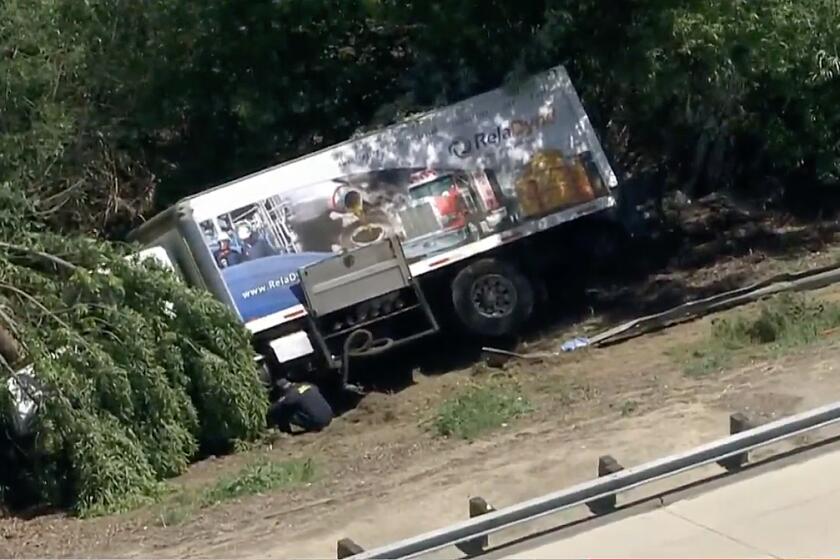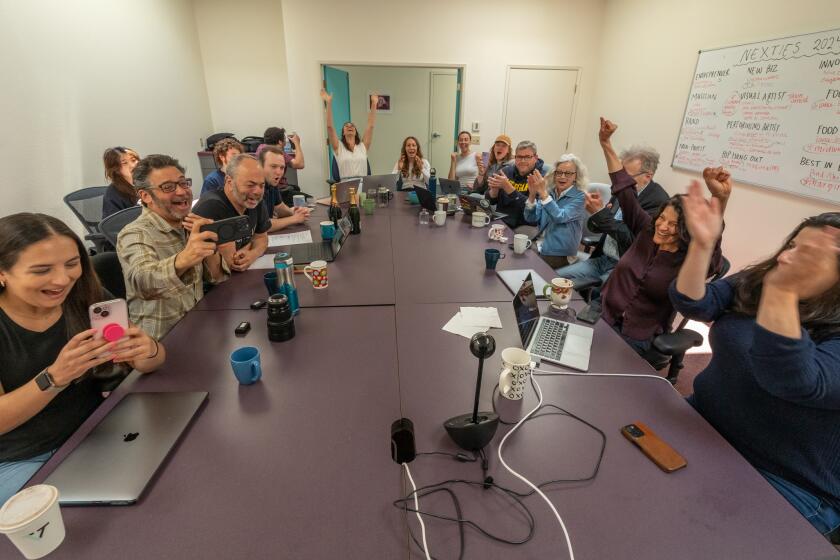Wilmington Activists Get Half a Loaf on Harbor Plan : Renewal: Los Angeles Harbor commissioners expand the redevelopment project area on the waterfront. The old Heinz cannery site wasn’t included, despite pleas by community groups.
Wilmington community activists, who have been pressing the Harbor Department to expand a waterfront area set aside for redevelopment, got half of what they wanted from harbor commissioners Wednesday.
The commissioners voted to expand the project area by eight to 10 acres but did not include the former Heinz Pet Food Cannery building.
“They did exactly what we anticipated they would do,” said George De La Torre, chairman of the Wilmington Community Citizens Advisory Committee.
The original project area included a 29-acre parcel with a small amount of waterfront area at the foot of Avalon Boulevard. Community activists and Los Angeles City Councilwoman Joan Milke Flores have proposed redeveloping the area as a commercial and tourist center that they hope will have the cachet of Ports O’ Call in neighboring San Pedro.
On Wednesday, the commissioners added waterfront property now occupied by the Catalina Freight Co. terminal, a 2.3-acre container storage yard owned by the Los Angeles Department of Water and Power and the facilities of the College of Oceaneering, a school for underwater welding.
No specific use for land in the expanded project area has been determined, although a consulting firm is working on a feasibility study. Some potential uses include restaurants, commercial buildings, retail shops and parkland.
In addition to expanding the area being studied, the commissioners decided to consider two alternates for routing Southern Pacific rail lines and automotive traffic.
One proposal would extend Alameda Street, which now ends at B Street, on a diagonal through the waterfront area. An existing rail line would parallel the road.
The other proposal, favored by Wilmington activists, would reroute the rail line away from the waterfront area. Alameda Street would not be extended, but improvements would be made to B Street and Fries Avenue.
The first route, said De La Torre, “would virtually be a death blow, because I don’t see how a developer would want to go in there and do any kind of project where you would have traffic and pollution and noise.”
At the meeting, De La Torre requested that the commission include the cannery in the project, but no action was taken.
Community proposals to renovate the cannery for commercial uses have been resisted by port officials, who want to tear down the building and use the land as a storage area for heavy machinery.
But the demolition plans were dealt a setback Nov. 15 when the Los Angeles Cultural Heritage Commission designated the building a historical monument, an interim move that prevents demolition.
If the City Council ratifies the historical designation, any new use of the cannery would have to be approved by the council, according to Ann D’Amato, Flores’ deputy for the harbor area.
D’Amato said the council is expected to take up the issue within six weeks.
De La Torre said harbor officials would prefer “to take a few pictures and put a plaque somewhere and say this is the way it used to be. . . . Our request is that if it is declared a historical monument, it be included” in the project.
More to Read
Start your day right
Sign up for Essential California for news, features and recommendations from the L.A. Times and beyond in your inbox six days a week.
You may occasionally receive promotional content from the Los Angeles Times.






